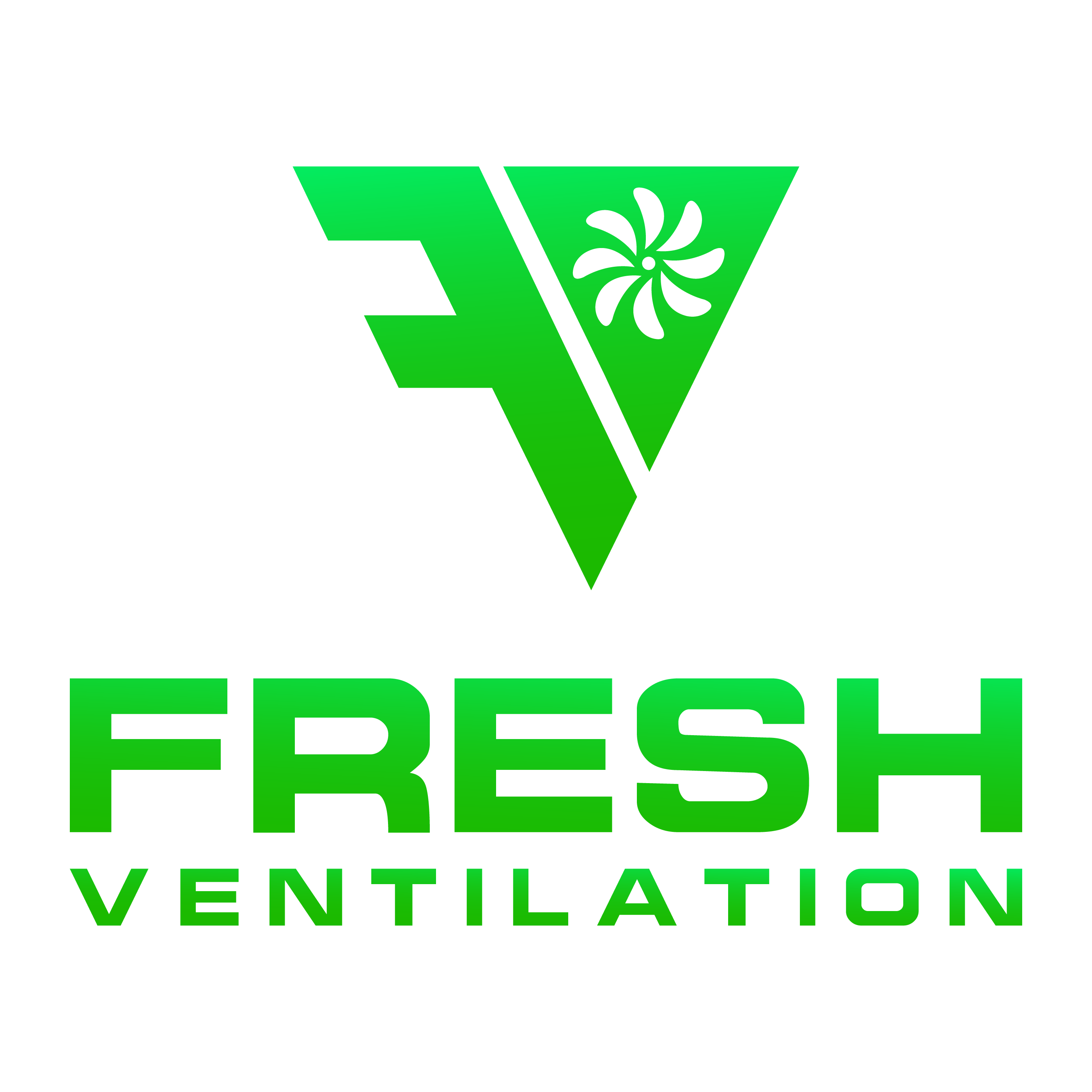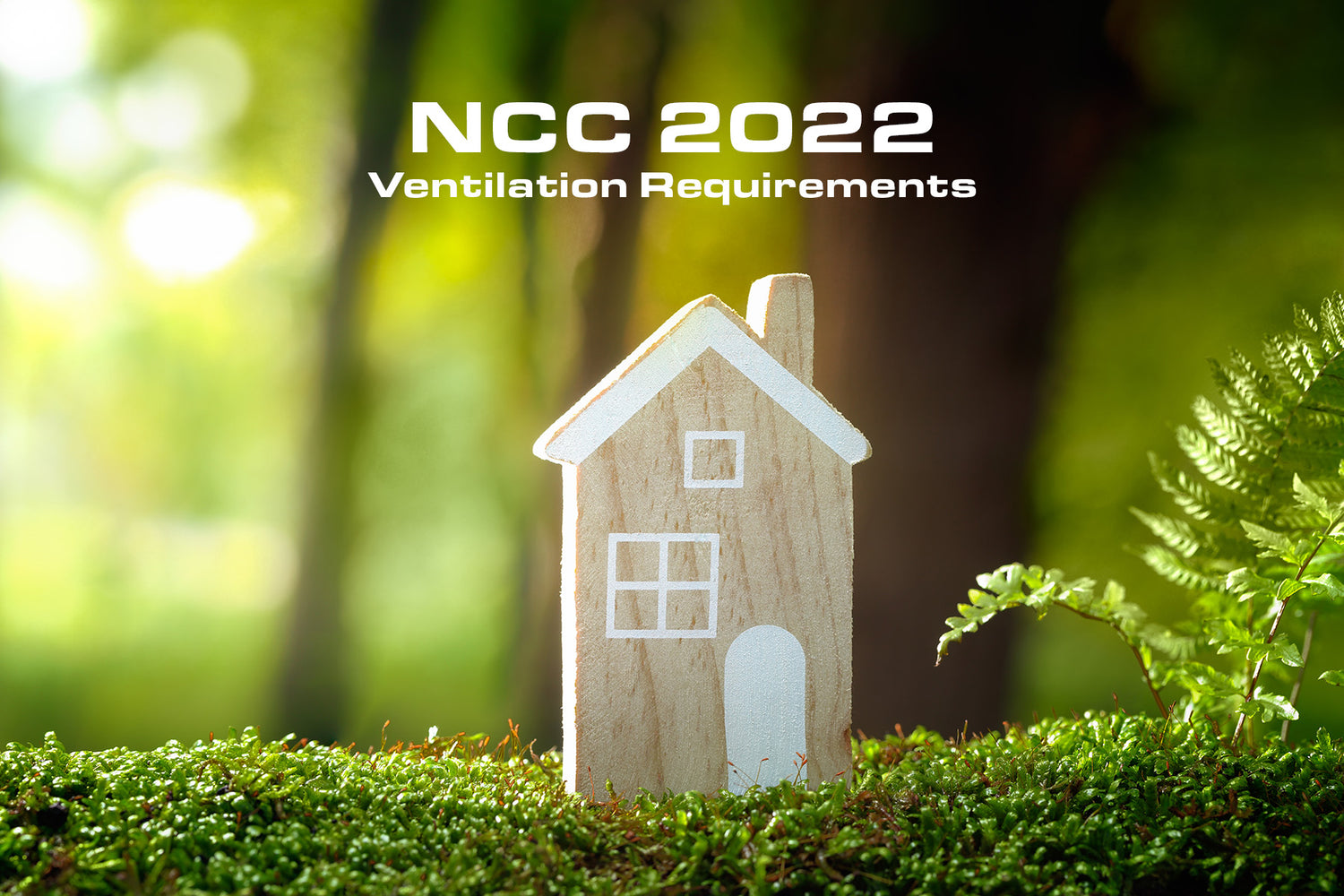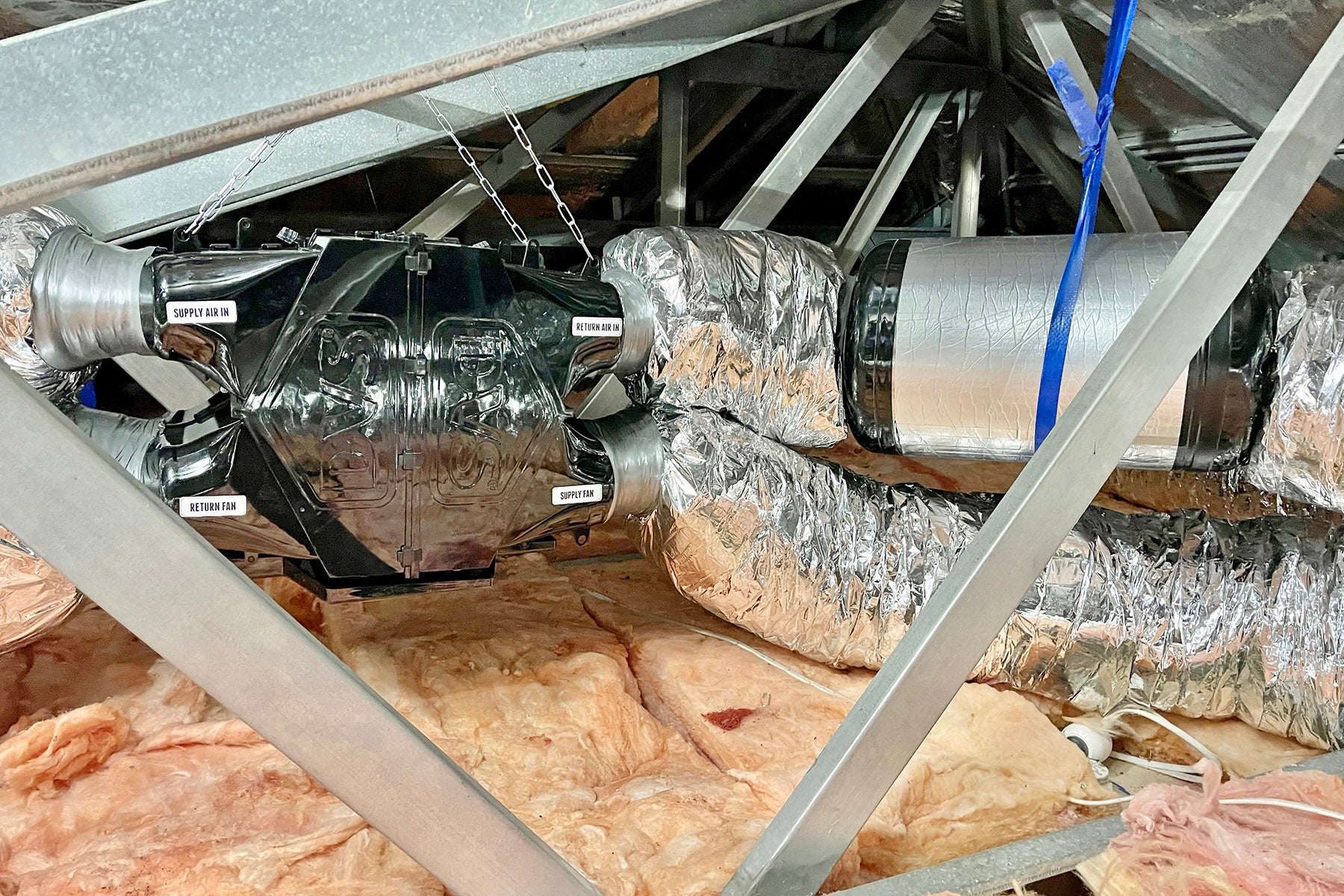The National Construction Code (NCC) 2022 has introduced pivotal changes in ventilation requirements, especially for buildings with less than 5 air changes per hour (ACH). This update is a significant move towards ensuring better indoor air quality and energy efficiency in Australian buildings, however, from the perspective of a ventilation business there is still a long way to go to ensure healthy indoor air quality for all occupants and mould free homes. A crucial aspect of these changes includes a new formula for calculating the minimum airflow requirements.
Understanding the Importance of Ventilation
Effective ventilation is essential for maintaining indoor air quality, controlling humidity, and ensuring the health and comfort of occupants. In buildings with less than 5 ACH, where natural air changes are limited, mechanical ventilation becomes even more crucial.
NCC 2022 Ventilation Requirements
The NCC 2022 outlines specific requirements for ventilation systems in buildings, focusing on mechanical ventilation for spaces with low natural air exchange rates. These standards are detailed in Volume 1 Part J1V4 for Class 2 to 9 buildings and Volume 2 Part H6V3 for Class 1 and 10 buildings.
Calculating NCC 2022 Airflow Requirements
A key aspect of the NCC 2022 is the formula for calculating the minimum airflow requirement for residential spaces. This formula ensures that the ventilation system can provide an adequate amount of fresh air based on the size and occupancy of the space. The formula is as follows:
Airflow (L/s) = 0.05 × Area (m2) + 3.5 × (Number of Bedrooms + 1)
Here, 'Area' refers to the total floor area of the dwelling, and 'Number of Bedrooms' is self-explanatory. This formula helps in determining the minimum amount of air (in litres per second) that needs to be circulated within a dwelling.
Example Calculation
Consider a recent quotation we did for a residential building with a total floor area of 210 m² and 4 bedrooms. Applying the formula:
Airflow = 0.05 × 210 + 3.5 × (4 + 1) = 28 L/s
This means the ventilation system must be capable of providing at least 28 litres of air per second, which is equivalent to 100.8 cubic metres of air per hour.
Compliance and Implementation
To comply with these new standards, builders and developers must incorporate mechanical ventilation systems capable of meeting these calculated airflow rates. Additionally, these systems should be energy-efficient, aligning with the broader goals of the NCC towards sustainability.
Implications for Ventilation Businesses
For businesses like Fresh Ventilation, these changes are a welcome step in the right direction. They open up avenues for discussion about ventilation, which until now has been rarely considered during most builds. However, as you'll see during our in-depth look at the example above requiring 100.8 cubic metres of air per hour, we have a long way to go.
What We Recommended for Proper Ventilation with High Indoor Air Quality
Recently, we at Fresh Ventilation had the opportunity to provide a quote for a comprehensive ventilation solution tailored for a multi-level residence in Canberra.
For supply of fresh air our proposal covered:
- 4 bedrooms.
- A rumpus room.
- A study.
- A living room.
- A dining room.
For extraction of stale air our proposal covered:
- 3 bathrooms.
- A kitchen.
- A laundry.
- A pantry.
Our proposal centred around a centralised Zehnder ComfoAir Q350 Heat Recovery Ventilation system (HRV), designed to deliver an impressive airflow of up to 350 cubic metres per hour. The system's reach was extensive, with fresh air supply points in eight distinct locations and stale air extraction from six opposing areas. This design was meticulously planned to ensure superior indoor air quality throughout the entire home. Our approach took into consideration the common household scenario where doors might be shut, and different sections of the home could be closed off, ensuring consistent air quality in all areas.
What the Homeowner Needed to Comply with NCC 2022
However, the homeowner's primary concern was to align strictly with the NCC 2022 requirements. According to these guidelines, the house needed a ventilation system capable of supplying only 100.8 cubic metres of airflow per hour. To meet this specification, the client opted for a more streamlined solution — a single decentralised system installed in just one room of the house.
Why Does this Matter?
While this approach satisfies the minimum standards set by the NCC 2022, it's important to consider its limitations, especially in a multi-level dwelling. The chosen system, being decentralised and confined to one area, may not adequately ventilate the entire home, particularly in scenarios where rooms like bedrooms are isolated with closed doors. This is especially critical in spaces with sleeping occupants, where air quality is paramount for health and well-being.
Our experience and expertise suggest that for pretty much any modern home, a more comprehensive system like the one we proposed would offer a significant advantage in maintaining consistent and high-quality indoor air across all areas. While adhering to the NCC 2022 requirements is essential, we believe in going beyond the basics to ensure that all corners of a home, regardless of their location or usage, receive equal attention in terms of ventilation. This approach not only meets regulatory standards but also aligns with our commitment to providing living spaces that are healthy, comfortable, and safe.
Conclusion
The NCC 2022 represents a significant advancement in Australian building standards, for the first time placing a strong emphasis on the critical role of adequate ventilation in modern construction. This development is particularly significant for professionals in the ventilation industry, underscoring the necessity to stay abreast of and adapt to these evolving regulations. Compliance with these standards is not just about meeting legal requirements; it's an opportunity for businesses like Fresh Ventilation to play a pivotal role in fostering healthier, more sustainable living and working spaces.
However, it's crucial to acknowledge that while adherence to NCC 2022 standards sets a foundational benchmark, there's immense scope to go beyond these minimum requirements. By embracing advanced ventilation technologies and proper ventilation design, we can significantly enhance indoor air quality, creating environments that are not only healthier but also resilient against issues like mould growth and dampness. Mould, a common problem in inadequately ventilated homes, can have serious health implications. By implementing more comprehensive ventilation solutions, we can effectively manage humidity and airborne contaminants, thereby reducing the risk of mould and ensuring a safer indoor environment.
In essence, while the NCC 2022 lays the groundwork for basic ventilation requirements, there's a vast potential for ventilation professionals like Fresh Ventilation to innovate and provide solutions that far exceed these standards. By doing so, we contribute not just to meeting regulatory compliance but to elevating the standard of living and well-being in homes and workplaces across Australia.




Leave a comment
All comments are moderated before being published.
This site is protected by hCaptcha and the hCaptcha Privacy Policy and Terms of Service apply.